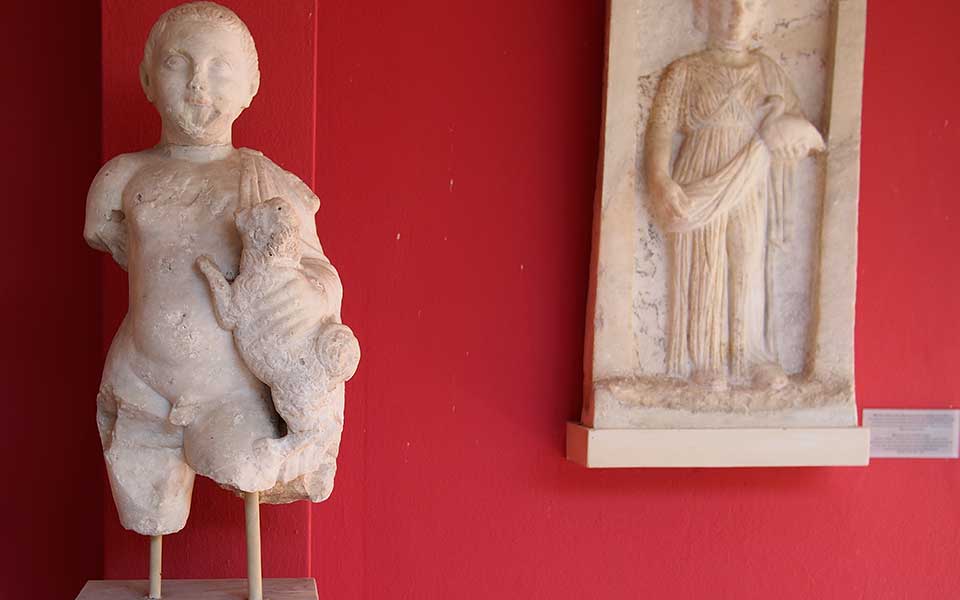Rabbits, dogs, snakes and birds… Everywhere we look in the archaeological and literary records of the classical world, it seems we find animals of almost every variety. Clearly, animals in ancient times featured commonly in people’s daily experiences, in popular storytelling and in mythological beliefs; their likenesses appear in vase paintings, frescoes, mosaics, stone sculptures and ceramic figurines, as well as on utilitarian or decorative objects of intricately carved ivory or hammered gold.
Living in an age prior to mechanization, much of the ancient Greek and Roman populations resided in rural areas outside cities, so they had more regular contact and firsthand familiarity with animals than most of us do today.
A CLOSE BOND
Even in urban settings, humans and their animals tended to share space and live more closely together than we might find comfortable today. Livestock, including calves, sheep, goats and pigs, were used for pious sacrifices. Lions, tigers, bears and other wild creatures became the focus of popular and elite entertainment; either hunted in nature or captured and pitted against each other – or human combatants – in bloody arena contests.
Horses and other draft or pack animals labored on farms, but in wartime they were called up for duty on the battlefield, occasionally serving alongside elephants. At all levels of society, animals played key roles in public, religious and military life. However, it’s plain to see in ancient art and literature that the closest bond was felt in the home, between masters or mistresses and their beloved domestic pets.
Most denizens of the ancient world loved and appreciated their animal companions, even mourning them and erecting commemorative markers over their graves when they died. Aristotle, the first philosopher to undertake the formal study and classification of animals, viewed them as irrational creatures of lesser moral rank, placed on earth solely to serve people. Other thinkers had greater esteem for them, including Pythagoras, who suggested animals possessed the reincarnated souls of human beings, after reportedly having witnessed the beating of a yelping puppy.
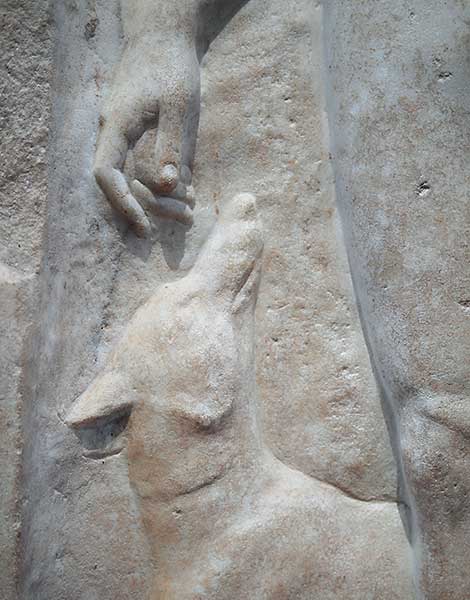
© Ministry of Culture & Sports, National Archaeological Museum
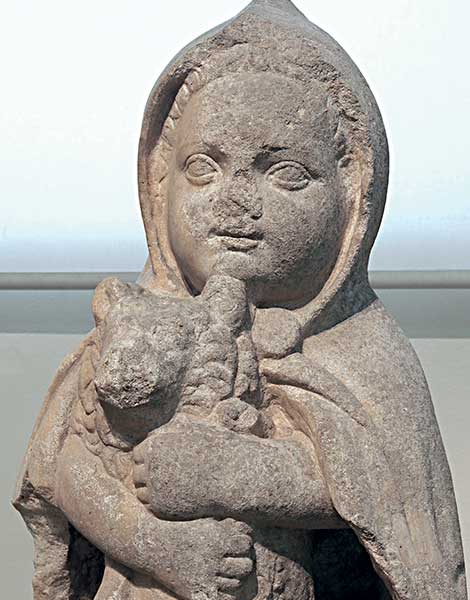
© Ministry of Culture & Sports, National Archaeological Museum
HOUSEHOLD COMPANIONS
Within the home and garden, the range of animals kept as pets was almost boundless, including dogs, ducks, geese, caged birds, rabbits, hares, tortoises, goats, quail and mice. Snakes had chthonic (underworld), spiritual significance, but were also employed – along with cats, ferrets or other weasels – to keep rodents at bay.
Chirping insects were treated like songbirds, with children weaving small boxes from reeds or slender branches to accommodate their pet locusts, crickets and cicadas. Boys seeking amusement are reported by a scholar writing on Aristophanes’ “Wasps” to have caught large beetles and tethered them with a thread tied to one leg – a practice also seen in red-figure vase paintings.
Other unusual pets included apes and monkeys (often taught to perform tricks), fawns and adult deer, gazelle, foxes and small mountain cats. Domesticated cats only became widespread during Roman times, perhaps due to increasing trade with Egypt.
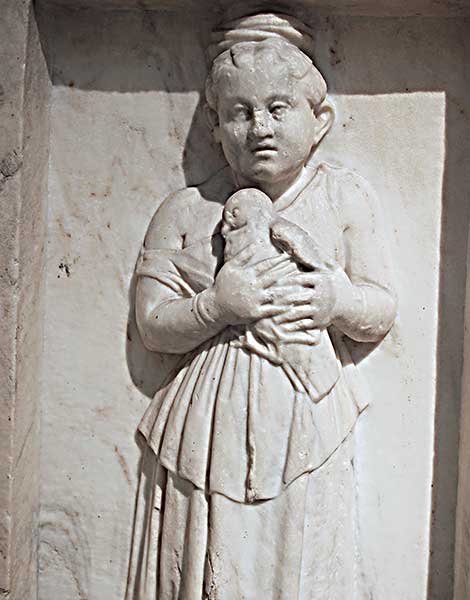
© Ministry of Culture & Sports, National Archaeological Museum
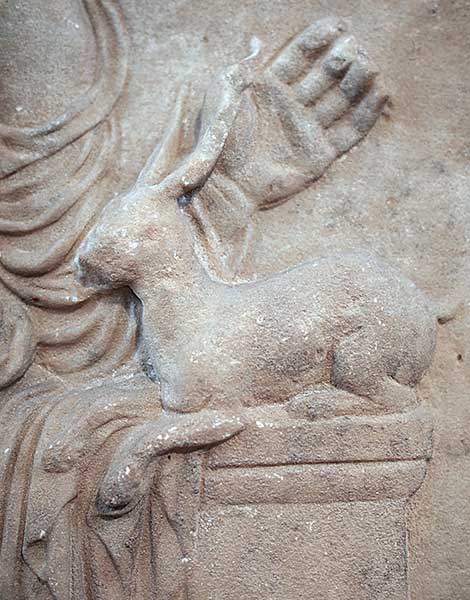
© Ministry of Culture & Sports, National Archaeological Museum
DIVINE PETS
Religious reverence may have played a part in the selection of pets, as certain animals were symbolic of a particular god or goddess. Sacred to Apollo and Artemis, for example, was the quail (ortyx) – likely a common sight at the divine twins’ central-Cycladic sanctuary on Delos, originally known as Ortygia or “Quail Island.” Pindar (5th century BC) and later mythographers relate that Asterie, sister of Leto (who bore the twins on Delos), escaped from Zeus’ advances by transforming herself into a quail, dropping into the Aegean Sea, then rising again as an island. Quails thus possessed a divine spirit and were coveted for their pleasing voices and colorful plumage.
Far wilder pets are known from the Roman era, when the emperors Domitian and Caracalla kept lions in their palaces. Caracalla’s beloved companion, Acinaces, ate with him at table and slept in his master’s chamber. Valentinian I had his servants take precious care of two she-bears, Mica Aurea (Gold Flake) and Innocentia (Innocence), to whom he apparently handed over his enemies as playthings.
RAISING THE ALARM
Household security was always a concern in antiquity. Canines were common gatekeepers – as mosaic thresholds in Pompeii reveal with their inscriptions “Cave Canem” (Beware of the Dog). Geese, a favorite pet of Penelope, could similarly serve a protective purpose. Caged birds, too, might alert homeowners to visitors, but were more often kept for their cheerful chirping.
Talking green parrots, popular in Rome’s affluent homes, are described by Pliny as imports from India and “especially frolicsome under the influence of wine.” Even more ostentatious and expensive were pet peacocks, ridiculed alike by Greek comedic playwrights and Roman moralists.
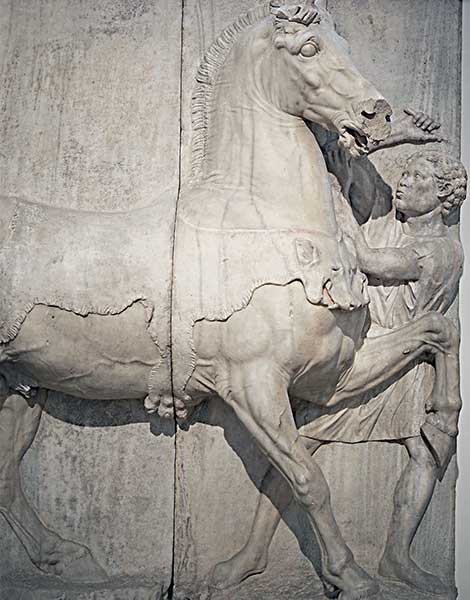
© Ministry of Culture & Sports, National Archaeological Museum
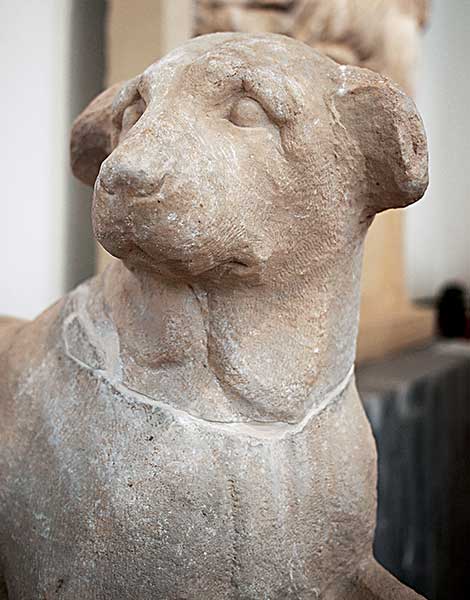
© Ministry of Culture & Sports, National Archaeological Museum
A FAITHFUL FRIEND
Above all, pets provided comforting companionship, best displayed by the loyal dog. Ancient Greece’s most illustrious hound was probably faithful Argos, who patiently awaited Odysseus’ return from Troy, and then, after their reunion, died contentedly. Among valued canine breeds were Molossian, Laconian and Cretan guard dogs and the ubiquitous Melitan lap dog from Malta.
The swineherd Eumaeus likely kept Molossians, as did nouveau riche Trimalchio, whose enormous beast Scylax, according to the Roman writer Petronius, caused a furious fracas during a banquet – attacking a smaller dog, upsetting a table lamp, smashing all the wine cups and sprinkling the guests with hot oil.
Less ferocious was Publius’ little Issa, extolled by Martial: “More pure than the kiss of a dove… more loving than any maiden… dearer than Indian gems… She lies reclined upon his neck, and sleeps… and has never sullied the coverlet with a single spot…”

